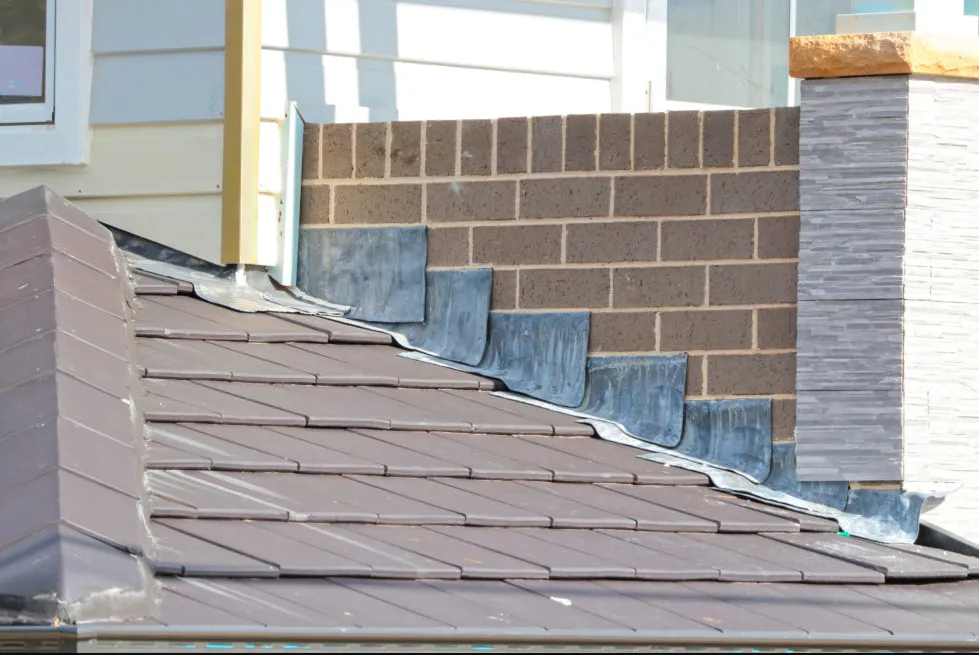Roof flashing is a vital component of any roofing system, which plays an important role in protecting your roof from water damage. It is installed at various points on the roof where water tends to pool or collect, such as valleys, chimneys, skylights, and vents. In this article, we will discuss what roof flashing is, the different types of roof flashing, the materials used for roof flashing, and much more.
What is Flashing on a Roof?
Flashing is a thin, waterproof material that is installed on the roof to prevent water from seeping into the roof and causing damage. It is typically made of metal, although other materials such as plastic, rubber, or even asphalt may also be used. Flashing is installed in areas where two different parts of the roof meet, such as where the roof meets the chimney or where two roofs meet in a valley.
Types of Roof Flashing
There are several different types of roof flashing, each designed for a specific purpose. The most common types of roof flashing include:
Step flashing – Step flashing is installed on the sides of the roof where the roof meets a vertical wall. It is designed to prevent water from seeping between the wall and the roof.
Counter flashing – Counter flashing is installed on top of step flashing to provide an extra layer of protection. It is designed to prevent water from seeping behind the step flashing.
Valley flashing – Valley flashing is installed in the valley where two different roof surfaces meet. It is designed to prevent water from pooling in the valley and causing damage.
Drip edge flashing – Drip edge flashing is installed along the edges of the roof to prevent water from seeping underneath the shingles or tiles.
What Materials are Used for Roof Flashing?
Roof flashing is typically made of metal, with the most common materials being aluminum, copper, and galvanized steel. Aluminum flashing is the most commonly used because it is lightweight, easy to work with, and resistant to corrosion. Copper flashing is more expensive but is often used for high-end homes or historic restorations because of its aesthetic appeal. Galvanized steel flashing is the least expensive but is not as durable as aluminum or copper.
Does Roof Flashing Ever Need to be Replaced?
Roof flashing is designed to last for many years, but it will eventually need to be replaced. Over time, flashing can become damaged, corroded, or even torn off by strong winds. When this happens, water can seep into the roof and cause damage to the structure. If you notice any signs of damage to your flashing, such as rust, cracks, or missing pieces, it is important to have it repaired or replaced as soon as possible.
Roof Flashing Sizes
Roof flashing comes in various sizes and thicknesses, depending on the type of roof and the area where it will be installed. The size of the flashing will also depend on the slope of the roof, the climate in which the roof is located, and the type of roofing material used.
Roof Flashing Techniques
Roof flashing is installed using a variety of techniques, depending on the type of flashing and the area where it will be installed. The most common technique is called “through-wall flashing,” which involves inserting the flashing into a slot cut into the masonry or wood of the wall. Other techniques include “chimney flashing,” “vent pipe flashing,” and “cap flashing,” which are used for specific areas of the roof.
Conclusion
In conclusion, roof flashing is an essential component of any roofing system, designed to protect your roof from water damage. With the right type of flashing and proper installation techniques, your roof will be able to withstand harsh weather conditions and last for many years. If you are experiencing any issues with your roof flashing, it is important to have it inspected and repaired by a professional roofer. By understanding the different types of roof flashing, the materials used, and the techniques involved in installation, you can ensure that your roof remains strong and secure for years to come.



